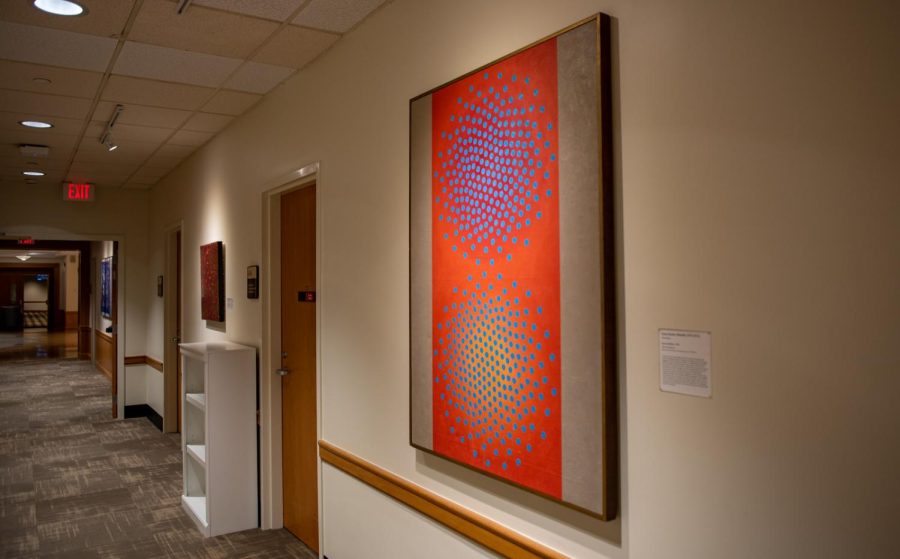According to University Art Curator Dr. Jennifer Finkel, it is difficult to teach from artwork in the Reece Collection because it is hung in often-busy hallways.
Everywhere and nowhere
April 12, 2023
With public art, one of the first challenges to think about is contextualization. In a museum, works can tell a story, but in hallways, Finkel says there’s no way for the works to be in dialogue with one another. That’s not without trying, though. Reece Collection works have labels next to them, and some even have QR codes that can take viewers to more information. That is, of course, if viewers take the time to read them.
Another challenge with hanging the works in Benson or Reynolda is that it is difficult to teach there. Finkel says that the Reece Collection is academic and should serve as a resource, but those buildings don’t work as teaching spaces.
“It is near impossible to really teach from the art,” she said.
While the collection is certainly accessible to students, few know about it. Or if they do, they don’t know that it is fine art. Finkel often leads tours of the collection for students, and usually, only half the group knows that Wake Forest has an extensive art collection.
WFU has a choice — it can continue to let its collection deteriorate or not. The display conditions I witnessed are, frankly, appalling.
— Dr. Kevin Murphy, Williams College
“There are students who will actually go to Benson to have an art experience,” Finkel told me. “Then there are a lot of students who are studying in Benson who probably don’t even notice it. I mean, it could be poster art. Yeah, it could be posters. It’s everywhere and nowhere.”
In 2017, Dr. Kevin Murphy from Williams College conducted a review of Wake Forest’s art collection, much like Mills. In his report, he wrote: “…works in Benson are so visible as to have become invisible.” Everywhere, and nowhere.
Murphy’s report also raised alarm about damage to the art. He wrote: “WFU has a choice — it can continue to let its collection deteriorate or not. The display conditions I witnessed are, frankly, appalling.”
Murphy only confirmed what art faculty like Finkel have known for years — that the collection is in danger.
“As soon as you have artwork in any public space, it’s subject to any kind of UV light, natural light. The degradation starts almost immediately,” Finkel said. “Artworks are getting damaged by light. Artwork is getting damaged from accidental impacts. Artwork is getting damaged from vandalism.”
